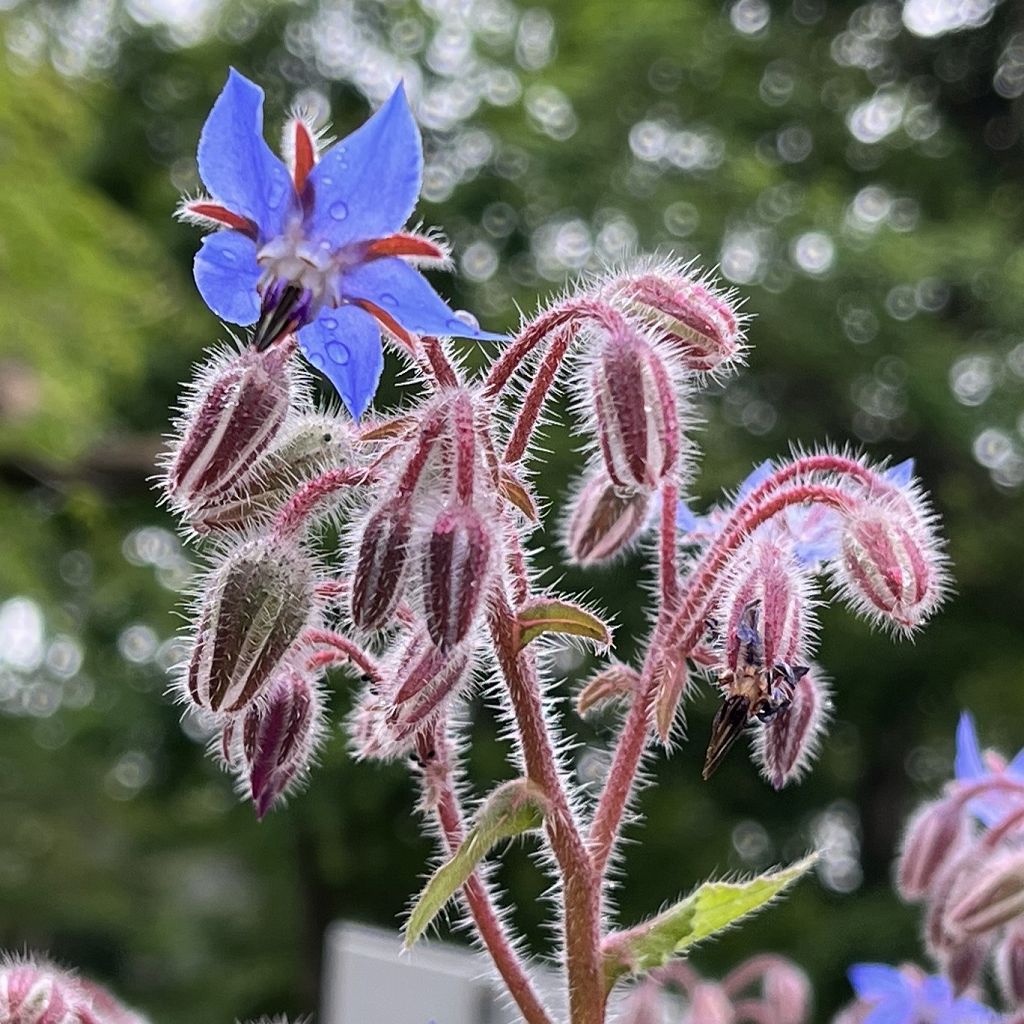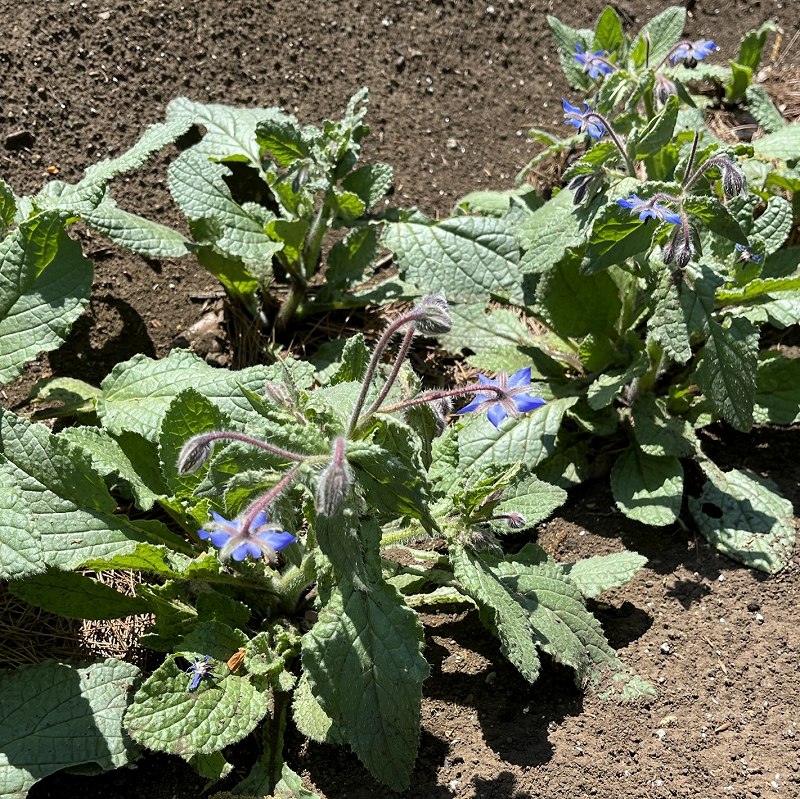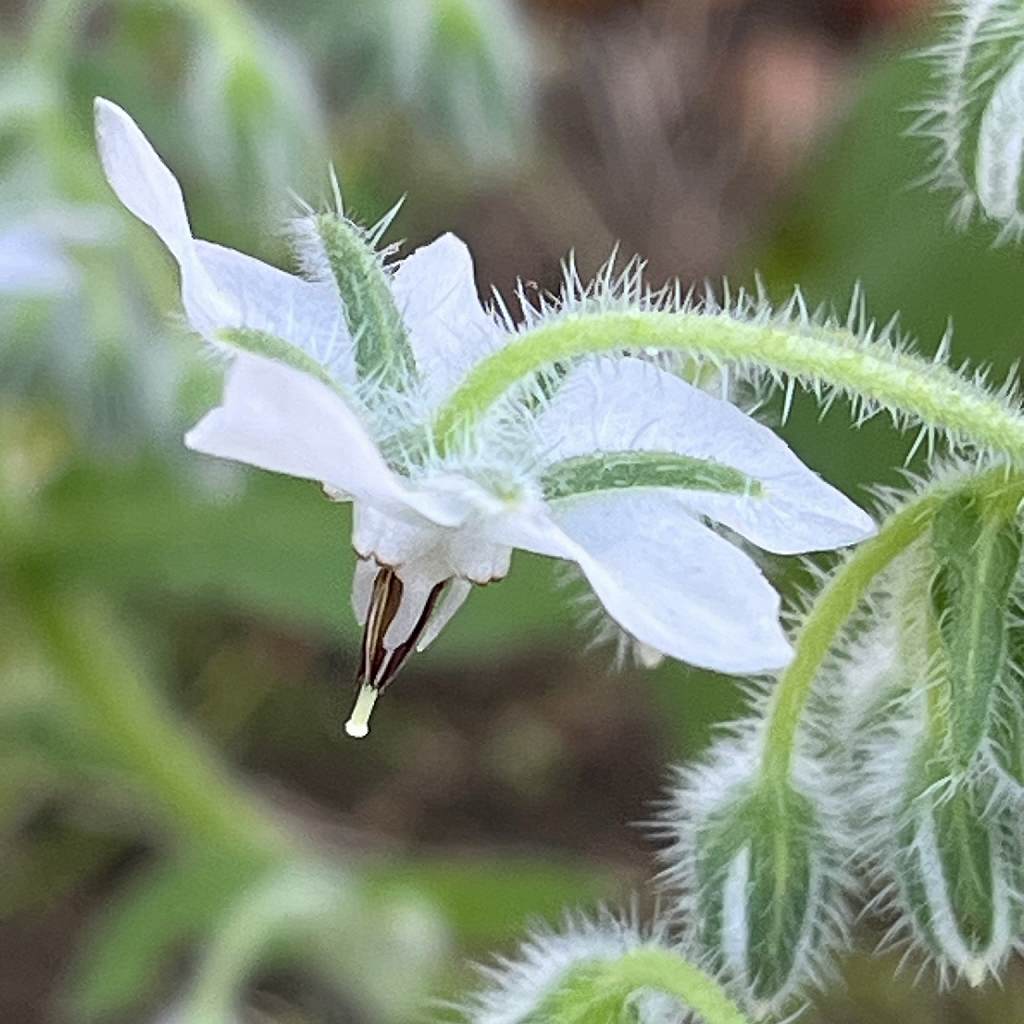ルリジサは花が「瑠璃」色で、葉が野菜の「苣」のよう。花は聖画でマリアの衣を描くときに使われたので「聖母の青色」とも呼ばれました。
Borage has flowers that look like lapis lazuli and leaves that look like vegetables. The flower is also called “Madonna Blue” because it was used to depict Mary’s robe in sacred paintings.
【仮名】ルリジサ, ルリヂシャ, ボリジ
【和名】琉璃苣, 瑠璃萵苣
【英名】Borage
【学名】Borago officinalis
【誕生】03/ 31, 05/ 21
【開花】04, 05, 06月
【花色】White, Blue




ルリジサ
ルリジサの概要
ルリジサはムラサキ科の1~2年草です。原産地は地中海沿岸で、古くから薬用や食用にも栽培。鮮やかな青色または白色の花が俯くように咲きます。一方、姿形が似ているものの、花が釣鐘型で青色が淡く、茎が地を這うのは近縁のピグマエア種。薬用や食用に向かない多年草です。
ルリジサの名前
ルリジサの名前の由来は花が「瑠璃」色で、葉が「苣」のように食べられるから。花は聖画でマリアの衣を描くときに使われたので「聖母の青色」とも呼ばれました。ラテン語の属名ボラゴは「綿毛」という意味で英名ボリジの語源。種小名オフィシナリスは「薬効」という意味です。
ルリジサの姿形
ルリジサは株全体が白い剛毛に覆われています。茎は中空で盛んに分岐し、葉は披針形~卵形で互生。花は下を向いて咲き、花弁5枚の星形で桃色から青色へと変わります。豊富な花蜜が多くの訪花昆虫を誘引。養蜂にとって大切な蜜源になるとともに、近くの作物の結実も促します。
ルリジサの薬用
ルリジサは、欧州で古くから勇気を奮い立たせる薬草とされ、花を浮かべたワインや、花を煎じたお茶を飲み干してから、戦士たちが出陣。昔は心が沈んでいるときなど普段使いの薬草でしたが、肝毒性のあるピロリジジンアルカロイドを含むため、今は常用が望ましくない薬草です。
ルリジサの食用
ルリジサは、花を生のままサラダに添えたり、砂糖漬けにしてお菓子を飾ったり、氷に閉じ込めて冷たい飲み物に浮かべたりします。若い茎葉は胡瓜に似た風味があり、スープやお浸し、天ぷらなどに。種子から抽出される油脂には、健康によいガンマリノレン酸が豊富に含まれます。
Borage
Borage is an annual or biennial plant belonging to the Boraginaceae family. Originating in the Mediterranean coast, it has been cultivated for medicinal and edible purposes since ancient times. Bright blue or white flowers bloom downward. On the other hand, the closely related Pygmaea species has bell-shaped pale blue flowers, and crawling stems, although it has a similar shape. It is a perennial herb that is not suitable for medicinal or edible purposes.
The Japanese name of Borage means “lapis lazuli lettuce”, because flowers color are like lapis lazuli and leaves taste are like lettuce. The flower is also called “Madonna Blue” because it was used to depict Mary’s robe in sacred paintings. The Latin genus name Borago means “fluff” and is the etymology of the English name Borage. The species name officinalis means “medicine”.
The whole plant of Borage is covered with white bristles. The stem is hollow and branched, and the leaves are lanceolate to ovate and alternate. The flowers bloom facing downward, and are five-petalled, star-shaped flowers that change from pink to blue. Abundant nectar attracts many flower-visiting insects. In addition to being an important nectar source for beekeeping, it also encourages nearby crops to bear fruit.
Borage has long been used as a medicinal herb to inspire courage in Europe. Warriors drank wine with flowers and tea with flowers before leaving for battle. In the past, this herb was commonly used when the mind was depressed. But it is now an undesirable herb for regular use, because it contains pyrrolizidine alkaloids, which are hepatotoxic.
Borage flowers can be served raw in salads, candied to decorate sweets, or frozen in ice to float in cold drinks. Young stems and leaves have a cucumber-like flavor and are used in soups, ohitashi, and tempura. The oil extracted from the seeds is rich in gamma-linolenic acid, which is good for health.


